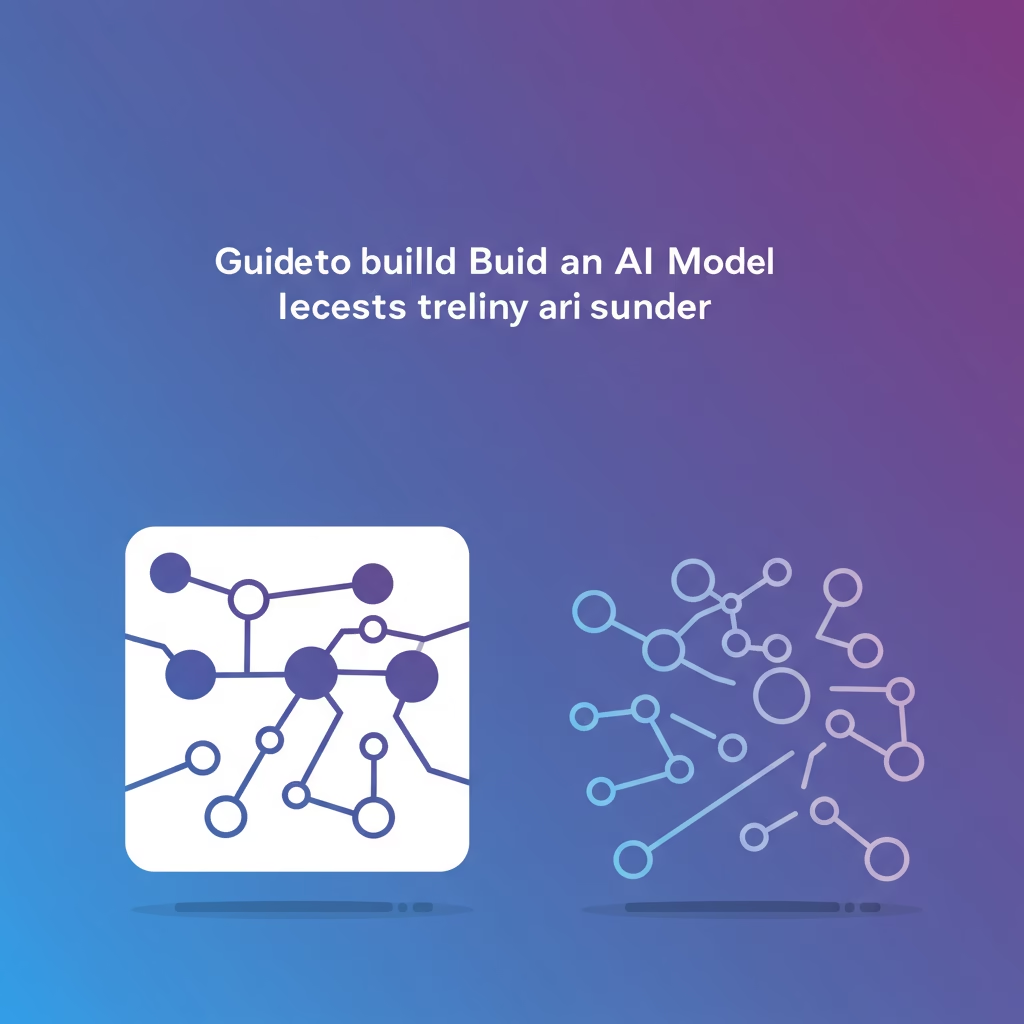Artificial Intelligence (AI) is transforming industries, and building your own AI model is now more accessible than ever—even for beginners. Whether you want to create a chatbot, image classifier, or predictive model, this step-by-step guide will walk you through the process.
Step 1: Define Your AI Project
Before coding, decide:
✔ What problem will your AI solve? (e.g., spam detection, sales forecasting)
✔ What type of AI model do you need? (e.g., classification, regression, generative AI)
✔ What data will you use? (e.g., text, images, numerical data)
Step 2: Gather & Prepare Your Data
AI models learn from data, so you’ll need:
- A dataset (sources: Kaggle, UCI ML Repository, or APIs)
- Data cleaning (remove duplicates, handle missing values)
- Data labeling (if supervised learning is required)

Step 3: Choose the Right AI Framework
Popular tools for beginners:
- TensorFlow / Keras (great for deep learning)
- PyTorch (flexible, research-friendly)
- Scikit-learn (best for traditional ML models)
- Hugging Face (for NLP tasks like chatbots)
Step 4: Train Your AI Model
- Split data into training & testing sets (e.g., 80% training, 20% testing).
- Select an algorithm (e.g., neural networks, decision trees, linear regression).
- Train the model using Python (example with TensorFlow below).
import tensorflow as tf
from tensorflow.keras import layers
# Example: Simple Neural Network for classification
model = tf.keras.Sequential([
layers.Dense(64, activation='relu'),
layers.Dense(10, activation='softmax')
])
model.compile(optimizer='adam', loss='sparse_categorical_crossentropy', metrics=['accuracy'])
model.fit(train_data, train_labels, epochs=10)Step 5: Evaluate & Improve Your Model
- Check accuracy, precision, recall (metrics vary by task).
- Tune hyperparameters (learning rate, layers, epochs).
- Prevent overfitting (use dropout, regularization).
Step 6: Deploy Your AI Model
Once trained, you can:
- Integrate into an app (Flask, FastAPI).
- Use cloud services (Google AI, AWS SageMaker).
- Share on platforms like Hugging Face for others to use.
Final Thoughts
Building an AI model is a rewarding journey. Start small, experiment, and gradually tackle more complex projects.
Want to dive deeper? Check out:
🚀 Now it’s your turn—start building!

